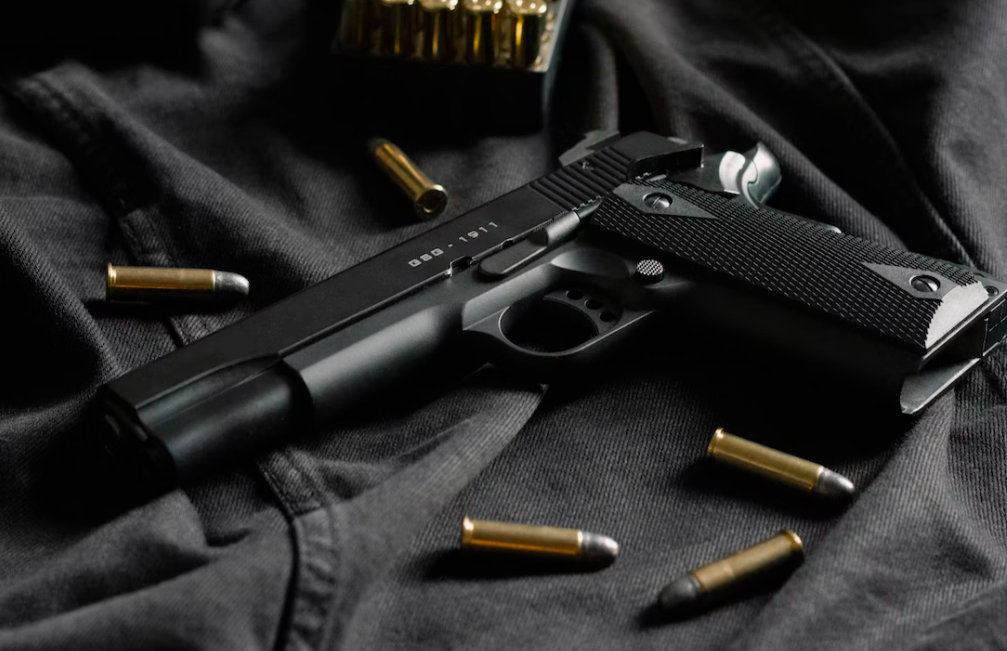Purchasing a handgun is an exciting and intimidating experience. There are plenty of things to consider when buying your first gun, and it can be difficult to know where to start. Here are seven important things you need to know about purchasing your first handgun.
Know Your Reason
If you’re considering getting a handgun, it’s important that you consider all the reasons why they can be a great asset. Handguns can provide peace of mind in many situations; they are accessible, easy to use, and can be taken just about anywhere to give the owner a sense of security and improved sense of safety. Additionally, owning a handgun can also instill a sense of confidence in otherwise risky situations. With the proper training and knowledge, using a handgun is an excellent way to defend oneself if necessary but understanding best practices such as safe storage, loading/unloading, and use should always be part of your consideration before heading out to purchase one.
Choose the Right Caliber
The caliber of a handgun is the size of its ammunition, or “bullet”, expressed in millimeters or inches. The most popular choice for a first-time handgun purchase is usually 9mm ammo because it’s easy to find, affordable, and has low recoil. In other words, it’s not too powerful for someone who isn’t used to shooting handguns yet. Other popular choices include .40 S&W and .45 ACP ammo, which are more powerful than 9mm but have greater recoil. If you decide to go with one of these calibers instead of 9mm, make sure that you practice shooting frequently with proper technique in order to get used to the increased recoil.
Understand Different Types of Firearms
When purchasing your first handgun, there are two main types available—semi-automatic handguns (also called auto-loaders) and revolvers. Semi-automatic handguns use cartridges from a magazine or clip that is inserted into the grip area of the firearm; once you pull the trigger on this type of gun, it will automatically eject a spent cartridge and load another until all rounds have been fired or until you release the trigger for safety purposes. Revolvers work by rotating a cylinder containing multiple chambers around an axis and require manual reloading after each shot has been fired; they also usually hold fewer rounds than semi-automatics do (usually 5 or 6). Both types have pros and cons, so research each one carefully before making your selection.
Learn Gun Safety Rules & Regulations
It is absolutely essential that anyone handling firearms understands basic gun safety rules and regulations before even considering purchasing one for personal use. Make sure you know how to safely store your firearm away from children at home as well as how best to transport it if necessary. Additionally, you should also familiarize yourself with local laws regarding concealed carry permits and other relevant regulations in your state/city/county/municipality before proceeding any further with your purchase plans. It’s important to take some time to learn about different types of self-defense ammunition as well so that you can make an informed decision when selecting what type of ammo will best suit your needs and preferences when shopping for ammunition (more on this later).
Select Quality Accessories
Once you’ve decided which type & caliber firearm best fits your needs, it’s time to select quality accessories for it such as holsters for concealed carry purposes or range bags for transportation & storage at home/at the range/etc., as well as eye/ear protection if applicable depending on where you plan on shooting your new gun (for example – indoor ranges typically require eye/ear protection whereas outdoor ranges may not). Quality accessories ensure that your new gun will be kept safe from harm while still being easily accessible when needed most – plus they look great too!
Practice Shooting Often
Practicing shooting with proper technique is key when using any type of firearm – especially with handguns since they tend to have more recoil than other firearms due to their smaller size & weight profile compared with rifles or shotguns (which both typically weigh more). To ensure that you are comfortable using your new gun at all times – no matter what circumstances may arise – practice shooting often with live ammunition under controlled conditions such as at a certified firing range so that you can become proficient in its use without risking injury or worse!
Buy Ammo Wisely
Last but certainly not least, buy ammo wisely! This means researching different brands and types of ammunition so that you can choose the one(s) best suited for both short-term target practice sessions as well as long-term defensive scenarios should they ever arise; also look into bulk discounts if applicable depending on how much ammo you plan on purchasing up front (this could save some money over time!). Be sure not forget about proper storage methods too – keep any unused rounds locked away securely in containers designed specifically for this purpose until needed again!
Purchasing a handgun for personal use can be an exciting yet intimidating experience – especially if this is your first time doing so! By following these 7 tips listed above – choosing the right caliber, understanding different types of firearms available today, learning gun safety rules and regulations specifically applicable in your area(s), selecting quality accessories such as holsters and range bags based off individual preference(s), practicing shooting often under controlled conditions via certified firing ranges only…and lastly but certainly not least – buying ammo wisely – then rest assured that owning a handgun does not need to be a daunting task anymore! With the right knowledge and preparation beforehand combined with regular practice afterwards – anyone can become an expert gun owner regardless if this is their first time owning a firearm or not!

